Container gardening is a great way to garden if you don’t have a lot of space, or if you’re not interested in traditional gardening. With container gardening, you can grow vegetables, fruits, herbs, and flowers in any location that has access to sunlight. And since containers can be moved around easily, you can find the perfect spot for them no matter where you live.
If you’re new to container gardening, this guide will teach you everything you need to know about getting started. We’ll cover the different types of containers you can use, the best plants for container gardening, and how to care for your plants so they thrive. By the end of this guide, you’ll be ready to create your own beautiful container garden.
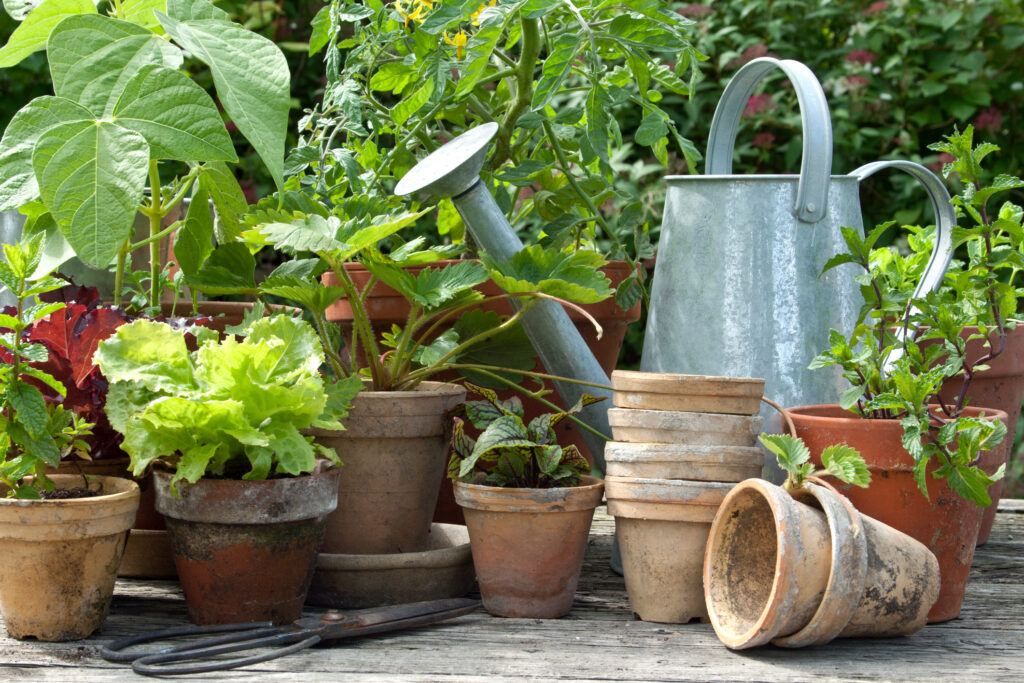
What is container gardening and why should you try it?
Container gardening is the practice of growing plants in containers instead of in the ground. It’s a great way to garden if you don’t have a lot of space and it’s also useful for adding plants around hard surface areas – such as patios, decking areas, or balconies. It’s also a great way to garden if you want to try out different types of plants before you commit to growing them in your garden.
How to choose the right plants for your container garden
There are a few things to consider when choosing plants for your container garden. One of the most important factors to consider is the size of the pot. You want to choose plants that will be able to grow comfortably in the size of the pot you have, or you’ll soon need to ‘pot them on’ – more on that later.
Another factor to consider is where you think the container will be positioned. Think about how much sunlight it will get. Some plants need more sun than others, so it is important to choose plants that will be able to thrive in the amount of light available at your intended location.
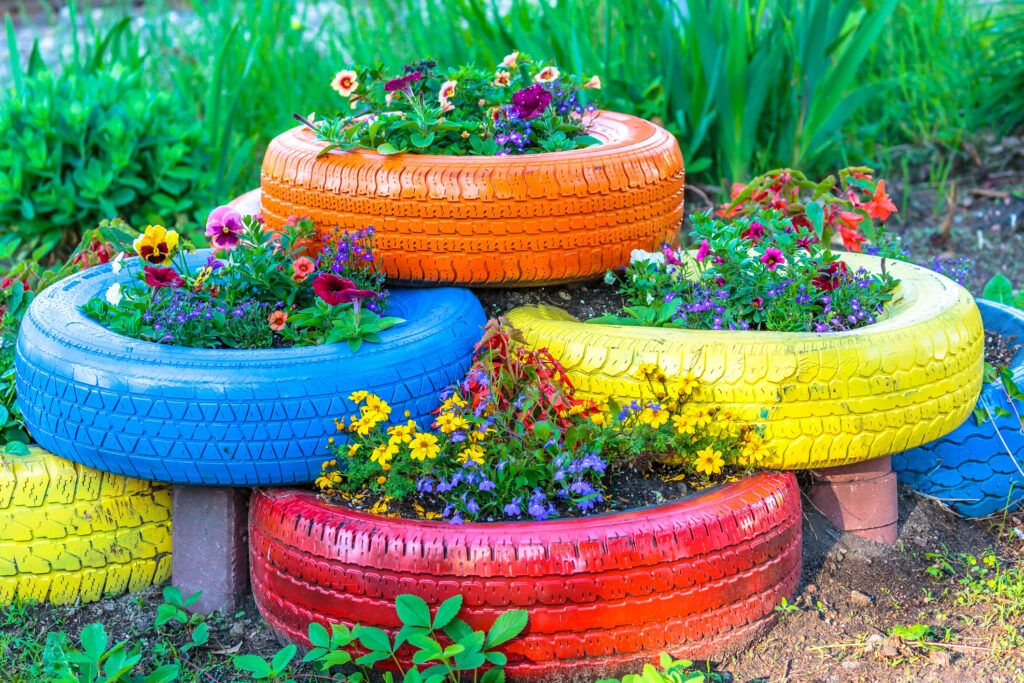
Choosing the right containers for your plants
Following on from our last section, we can look at things the opposite way around; that is, rather than choosing the right plant for the pot, you might think more about getting the right containers for the plants you intend to grow. There are many options available from terracotta to ceramic to plastic. There are also more sustainable options – check out this post about eco plant pots.
Ask yourself; how big will the plant get, how deep will the roots need to grow and where will you intend to grow it? Of course, the beauty of container gardening is that you can always move your pots around, but it doesn’t hurt to do a bit of planning at the beginning.
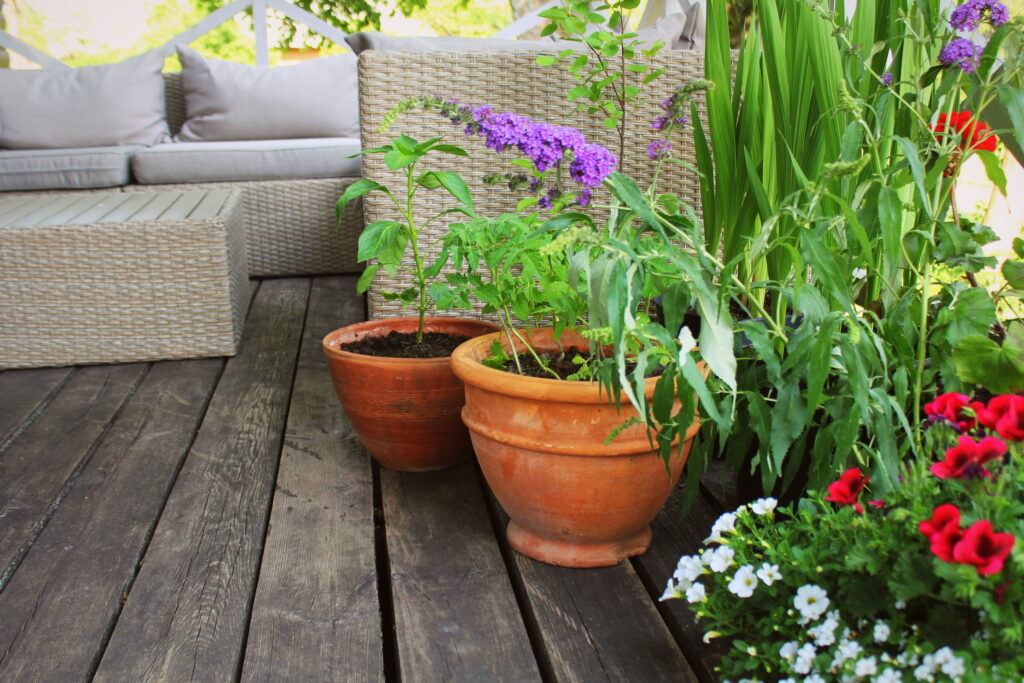
What to do when your plants start to grow too big for their container
Once your plants have outgrown their current containers, you’ll need to ‘pot them on’. This simply means transferring the plant and its roots into a larger pot. You can do this by gently easing the plant out of its current pot, taking care not to damage the roots, and then placing it in the new pot. Fill in any gaps around the plant with fresh potting mix, and water well.
Tips for watering your container garden
Watering is one of the most important aspects of container gardening. Because plants are growing in a confined space, they can’t access water from the ground like they would if they were planted in the ground. This means that you’ll need to water them more frequently than you would if they were planted in the ground.
Using a self-watering pot is a good way to make sure your plants are getting enough water. These pots have a water reservoir that the plants can use as they need it. This means you don’t have to water them every day, but you will still need to add water to the reservoir occasionally.

Another way to make sure your plants are getting enough water is to use a moisture meter. These devices measure the moisture content of the soil and will tell you when it’s time to water your plants.
Watering early in the day is always best, as it gives the plants time to absorb the water before the sun gets too hot. This means that less water will evaporate and the plants will have access to water all day long.
Finally, it’s important to make sure that your pots have drainage holes in the bottom. This will allow any excess water to drain away and will help to prevent your plants from becoming waterlogged.
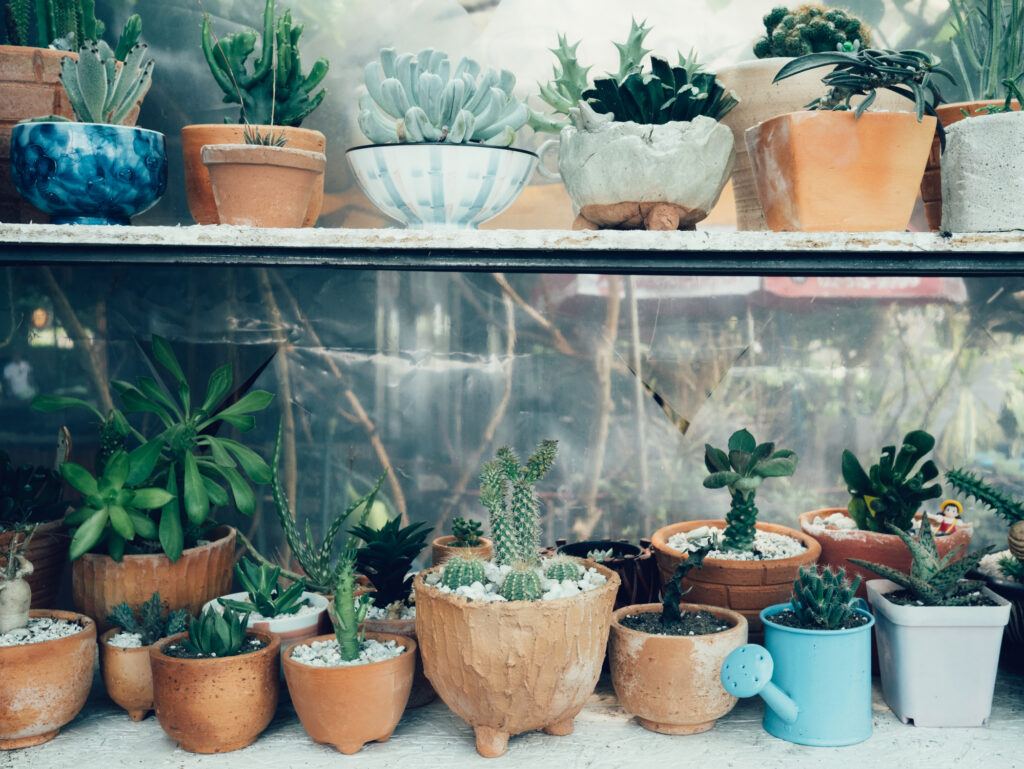
How to fertilise your container garden
Another essential component of container gardening is fertilisation. Because the plants are confined in a container, they cannot obtain minerals from the soil as easily as if they were planted in the ground.
There are many different types of plant food available, so it’s important to choose one that is suitable for the plants you are growing. If you’re not sure which one to choose, ask your local nursery or garden centre for guidance.
It’s also important to make sure that you’re not over-feeding your plants. This can lead to problems such as leaf burn, and it can also be harmful to the environment. Only fertilise your plants when they need it, and follow the instructions on the product packaging carefully.
Tips for dealing with pests and diseases in your container garden
Pests and diseases can be a problem in any type of garden, but they can be particularly troublesome in a container garden. This is because the plants are confined in a small space, which makes it easier for pests and diseases to spread.
There are many different products available to control pests and diseases, but the best approach is often to try and prevent them from occurring in the first place. This can be done by keeping your garden clean and tidy, and by choosing plants that are less likely to be affected by pests and diseases.
If you do find that your plants are affected by pests or diseases, it’s important to act quickly. Remove any affected leaves or stems, and treat the plants with an appropriate product.
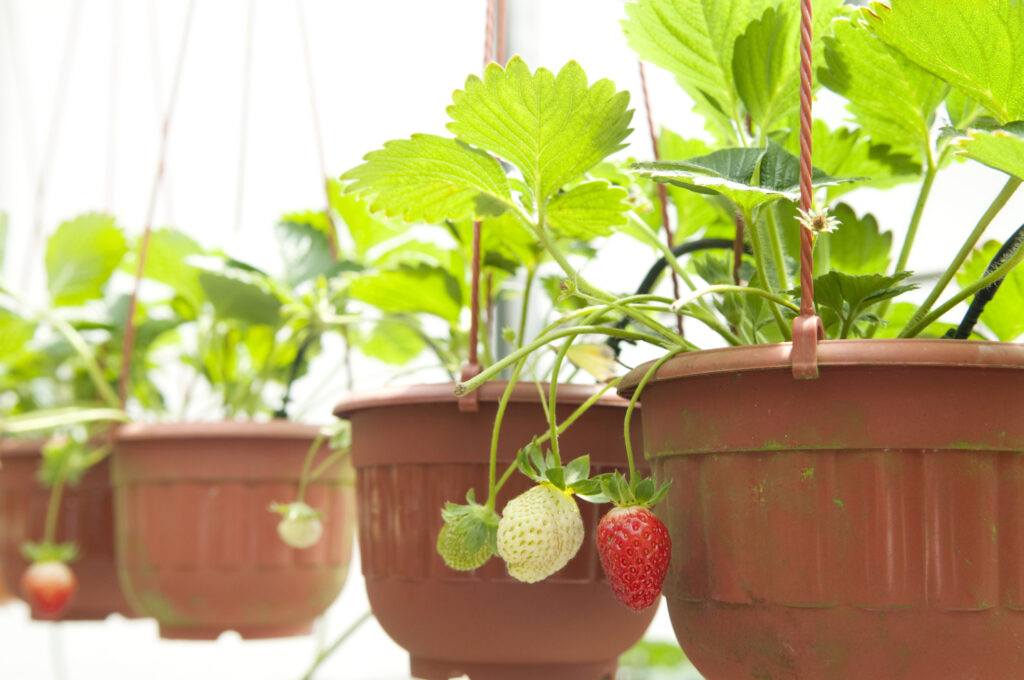
The best time to start a container garden
There is no definitive answer to this question, as it depends on a number of factors. If you’re starting from scratch, then the best time to start your garden is in spring, when the weather is warmer and the days are longer.
If you’re adding to an existing garden, then you can start at any time of year. However, it’s best to avoid planting in the middle of summer, as the heat can be too much for some plants.
It’s also worth noting that some plants are better suited to being planted in autumn or winter, as this is when they are dormant. These plants will often establish themselves better if they are planted during this time.
Of course, you might also move the location of your containers as seasons change throughout the year. Hardy plants might be ok left where they are, but more exotic varieties from warmer climates might need some protection from the cold in winter.
Besides covering plants with protective materials like gardener’s fleece, you could also consider moving them indoors. If you have a nice bright space, such as a conservatory summer house or garden room, then this would be ideal for over-wintering your more delicate plants.
How to transition your plants from indoor to outdoor containers
If you’re moving your plants from indoor to outdoor containers, then there are a few things you need to do to ensure that they make a successful transition.
Firstly, you need to acclimatise them to the change in temperature. This can be done by placing them outside for a few hours each day, gradually increasing the amount of time they spend outdoors over a period of two weeks.
Secondly, you need to make sure that the plants are getting enough light. If they’re used to being in a bright room, then they might not receive enough light outdoors. To avoid this, choose a sunny spot for your outdoor containers.
Finally, you need to check that the plants are getting enough water. Outdoor plants will usually need more water than indoor plants, so make sure that you’re watering them regularly.
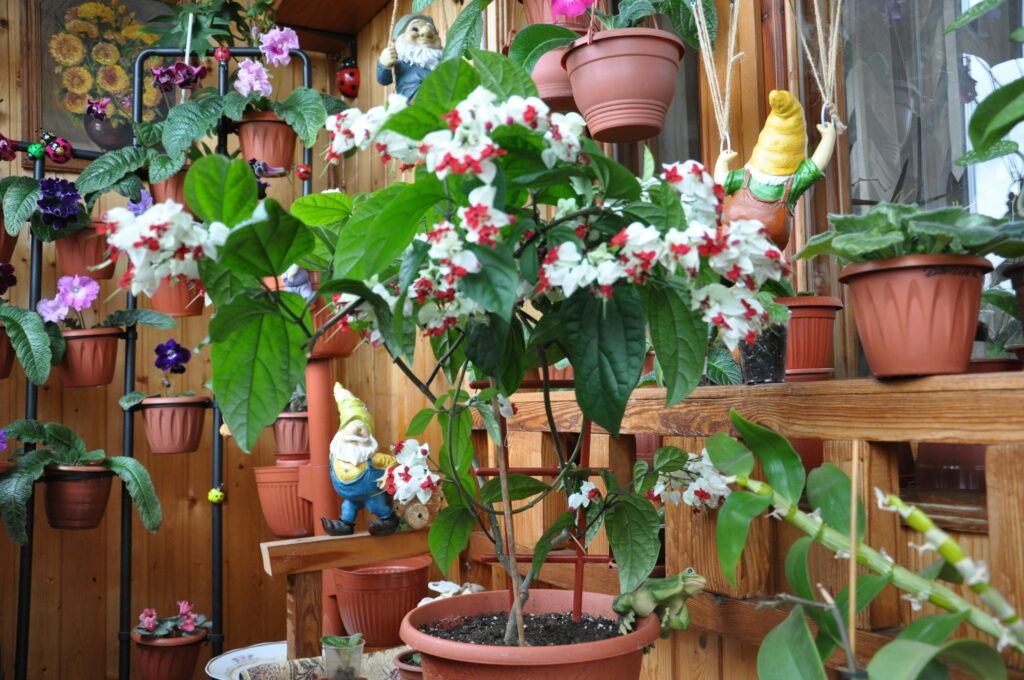
Ideas for creative container gardens
If you’re looking for some inspiration for your container garden, then why not try something a little different? Here are some ideas to get you started:
- A vertical garden: This is a great way to make use of limited space. You can buy specialised planters that are designed for vertical gardening, or you can get creative and use recycled materials like old pallets.
- A water garden: This is a beautiful and tranquil addition to any garden. You can buy purpose-built containers, or you can repurpose an old washing-up bowl or sink.
- An upside-down garden: This is a great way to grow plants that don’t require a lot of root space, such as tomatoes. You’ll need to buy a specialised planter, but it’s definitely worth it!
- A herb garden: This is a great way to add some flavour to your cooking. You can grow herbs in any type of container, but make sure that they have drainage holes so that they don’t become waterlogged.
- A solar garden: This is a great way to utilize any unused space in your garden. You can buy specialized solar planters, or you can repurpose old solar lights.
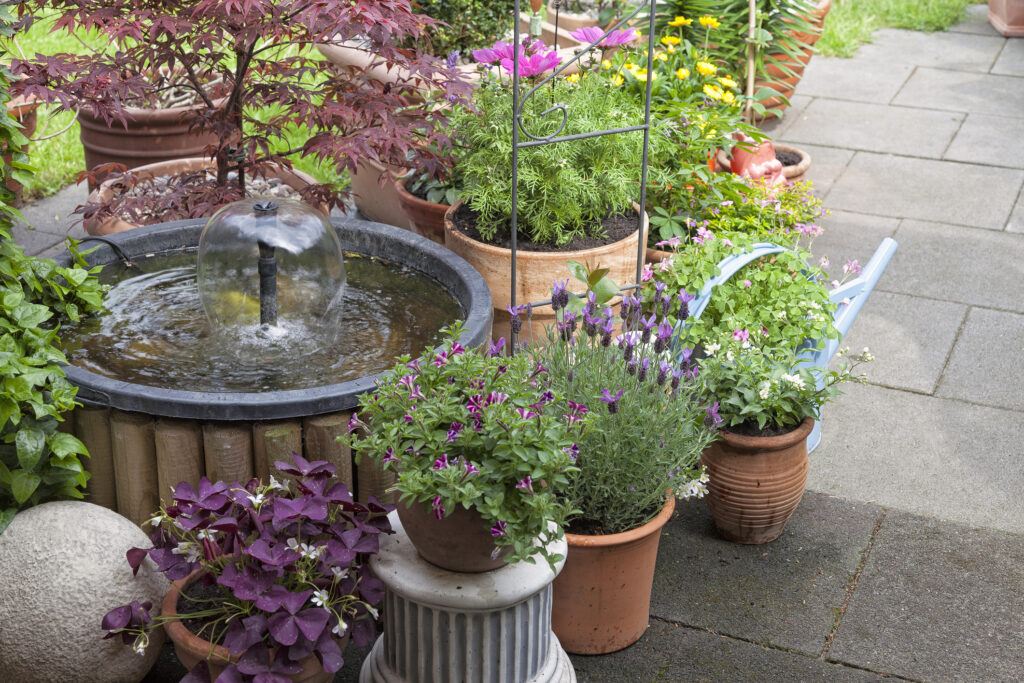
Final thoughts
Container gardening is a great way to grow plants, regardless of the size of your garden. By following the tips in this guide, you’ll be sure to create a beautiful and successful container garden.
Have you tried growing in containers? We’d love to hear about it. What plants did your grow? Any tips or ideas that we’ve missed? Let us know in the comments. Happy container gardening!
